Waters in the Desert – Living Alongside Urban Wildlife
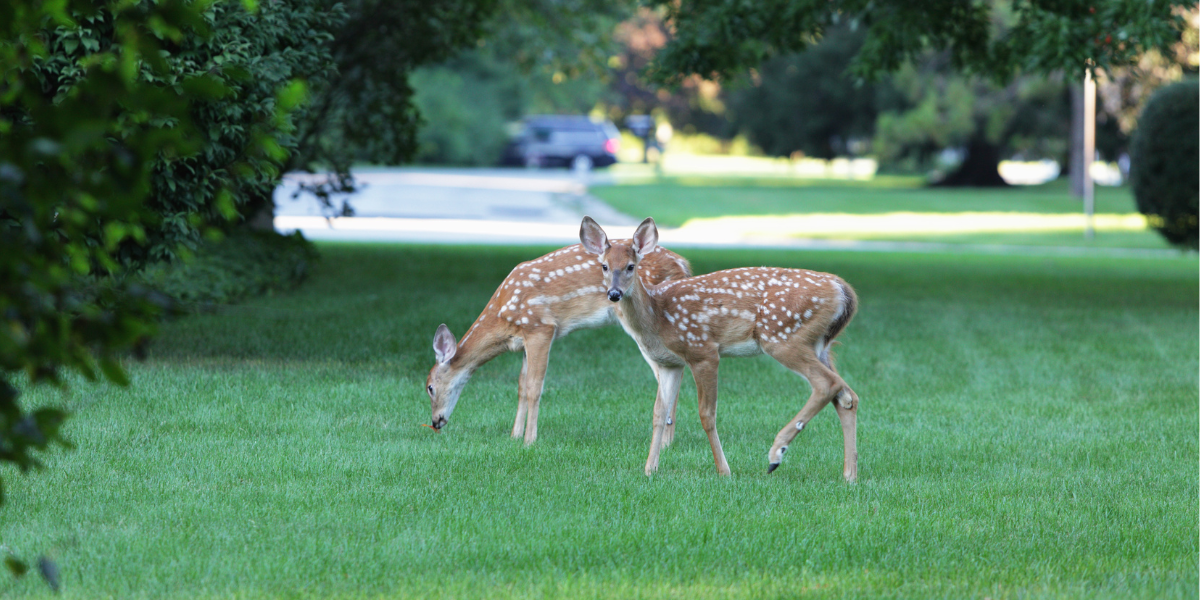
Wildlife is resilient. It thrives in the rich backcountry of the state – the broad expanses of western North Carolina mountains, the coastal plains, and the Piedmont pine savannas. But often overlooked are the species that exist outside of these areas, the species whose homes are closer to urban centers. In many spaces, this wildlife has been labeled: urban wildlife.
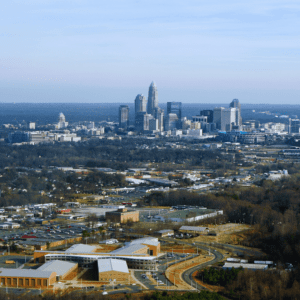
Charlotte, NC
While there is nothing biologically different from urban wildlife and wildlife that live in more rural areas (for instance, a white-tailed deer that lives in the country versus a white-tailed deer that lives in or near a city), the title “urban wildlife” better denotes a state of being for this classification of wildlife. They may not be taxonomically different from their contemporaries in the countryside… but their lives are unmistakably affected by their proximity to these urban areas.
North Carolina holds a vibrant diversity of wildlife across the state. Many of these species are specially adapted to specific habitats containing unique food and water sources, nesting habitat, and mating grounds. There is much concern surrounding the fever-pitch expansion of urban centers into previously undeveloped natural areas. Urbanization, habitat degradation and fragmentation are indeed some of the largest threats facing wildlife… but, nevertheless, wildlife finds a way to push through the threatening elements of these urban spaces.
Urban Lands = Private Lands
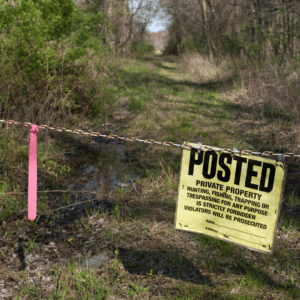
Over 85% of land in North Carolina is privately owned – both urban and rural.
In November, 2023, NCWF celebrated and called attention to North Carolina’s private lands. The state is blessed with more than 5 million acres of public lands where many species of wildlife reside. But to rely on these public spaces as the only space where wildlife can belong and truly thrive is not only a slippery slope – it’s a death sentence for wildlife.
More than 85% of land in North Carolina is privately owned, land that wildlife calls home. Given this reality, an interconnected network of private lands across the state providing wildlife with their essential needs is critical. But this is an uphill battle as rapid development continues statewide and as these private lands continue to evolve into spaces with which wildlife has previously never had to contend.
Despite the harm that this development causes and the alterations that it makes to the landscape, there are ways to mitigate its impact and lessen the blow to innumerable species of wildlife. There are ways to make these urban and suburban spaces a place where wildlife can continue to live and maybe even thrive.
Habitat Generalists
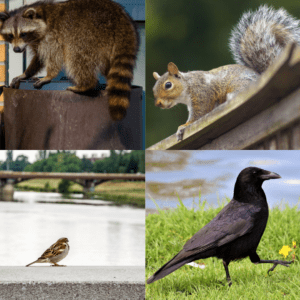
Some habitat generalists present in urban areas: Raccoons, gray squirrels, sparrows, crows
The essential needs of wildlife vary across species, locations, and circumstances. Habitats are not “one size fits all” landscapes. Many wildlife species require certain kinds of food, water sources, cover, and more – filling an ecological niche that no other species can. When these unique and complex habitats are destroyed or altered, they can become inconducive or even hostile to wildlife.
Many endangered species become endangered as a result of their prime, specialized habitat being minutely altered. This hits on the critical importance of not only protecting wildlife themselves but the habitats to which they belong. The status of natural habitat directly affects the well-being of the wildlife within it.
That being said, there are certain species of wildlife that are more flexible when it comes to the places they call home.
Habitat generalists are species that can live in a number of different environments with a varied diet that allows them a certain level of habitat flexibility. This is not to say that they remain unaffected by the alteration and degradation of their home habitat. The stress and environmental harm that these habitat degradation causes nevertheless affect their health and well-being.
Among habitat generalists who commonly live and can adapt to urban settings are white-tailed deer, raccoons, crows, possums, gray squirrels, and some songbirds. Keep in mind that the presence of a wildlife species in a specific area does not necessarily mean that they are suited for that area. Habitat fragmentation often keeps wildlife from accessing their prime habitat, sequestering them into spaces less suitable for them.
Urban Centers – The harm they can cause
Despite the fact that certain wildlife species (particularly habitat generalists) can manage in urban landscapes, they can still be harmed by the elements of these spaces.
Safe Passage
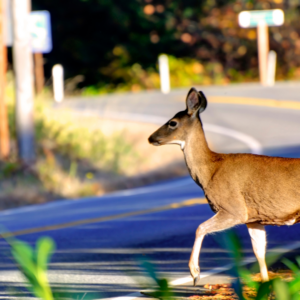 One of the largest problems posed by urban sprawl is the prevalence of asphalt and concrete (particularly in roadways and parking lots), and space taken up by urban structures. The implementation of these features on the landscape directly eliminates food, water, and cover sources utilized by wildlife, and prohibits safe travel from place to place in search of resources. With the inability to pass safely between natural habitats, wildlife is often hurt or killed as a result of their efforts – primarily in the form of vehicle-wildlife collisions.
One of the largest problems posed by urban sprawl is the prevalence of asphalt and concrete (particularly in roadways and parking lots), and space taken up by urban structures. The implementation of these features on the landscape directly eliminates food, water, and cover sources utilized by wildlife, and prohibits safe travel from place to place in search of resources. With the inability to pass safely between natural habitats, wildlife is often hurt or killed as a result of their efforts – primarily in the form of vehicle-wildlife collisions.
Pollution
Another issue brought about by urban centers is pollution of various kinds.
While litter taints the aesthetic beauty of the landscape, it can also clog water sources, entrap or strangle wildlife, and poison wildlife that consume it.
Industrial and vehicle emissions within urban centers impact air quality for humans and wildlife alike, and the use of pesticides and herbicides within city limits poison water and food sources and can also cause harm to wildlife through direct contact.
People Food vs. Food for Wildlife
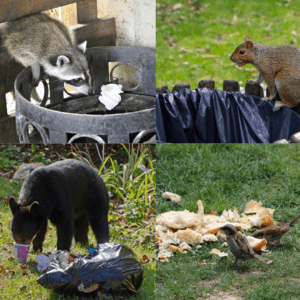
Many species of wildlife present in urban areas come to rely on discarded human food items, to their detriment.
The mishandling of human food also creates problems for wildlife in urban centers. Many species of wildlife present in these areas come to rely on discarded human food items, either dropped on the ground outside of a restaurant, discarded in open-air trash cans that are easily accessible to wildlife, stored in unsecured garbage bins, or even fed directly to wildlife.
These sources of food are lacking in the essential nutrients that certain wildlife species require – but wildlife often has no other alternative but to feed on this easily accessible food. Urban centers have few natural areas for wildlife to forage and – when they do – the plant species present there are often exotic, pest-resistant, eye-pleasing plants lacking in nutritional value.
Waters In The Desert – What We Can Do
However, there are steps that can be taken to reduce harm to wildlife and provide these species with safe passage and resources within urban centers.
Secure Waste
Prevention is always the best way to mitigate harm to wildlife. In this case: prevent wildlife from accessing your food waste.
If you have outdoor trash bins, ensure that they are within an enclosure or have a fastener that keeps wildlife from opening trash can lids or doors.
Provide Safe Food/Water Sources
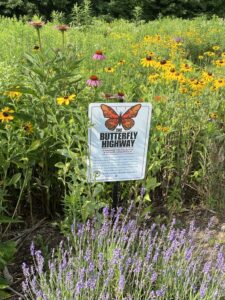
NCWF’s Butterfly Highway program is a great habitat solution for urban areas. Photo/Pitstop Credit: Barb Truehart
Many alternative water sources in urban areas contain harmful dyes and chemicals.
Providing a bird bath or a small fountain with chemical-free running water allows wildlife a place to hydrate and bathe.
While a bird feeder with bird seed does not provide wildlife with everything they need to remain healthy, these sites can provide beneficial supplementary food in spaces that are lacking. However, the best food sources you can provide are those that naturally exist in their habitats – native plants.
Plant Native/Remove Invasives
Many urban areas are dominated by exotic or invasive plants. These species are not beneficial for wildlife, and often choke out native plant species that are better for wildlife. Removing these invasive species is a good first step, but it is important to plant native species in their place to ensure that these invasives do not take hold again.
Whether it be in your backyard, office courtyard, parking lot flower beds, or even the flower box on your office window, you can plant native plant species that are beneficial to the wildlife in your area and provide them with the nutrients they need.
Here are some wildlife-friendly native species that you can plant… and some invasives you can help remove.
Restore Habitat – Community Wildlife Chapters
Another great way to make your city a friendly place for wildlife is to become involved in habitat improvement projects within your own community!
NCWF offers many opportunities for both urban and rural habitat restoration and improvement projects through its network of statewide Community Wildlife Chapters, including trash cleanups, invasive plant removals, and pollinator/native plant gardening projects and educational opportunities.
Get involved and find a NCWF Community Wildlife Chapter near you!

